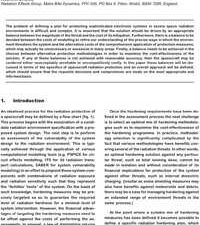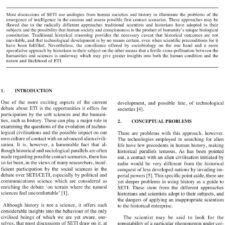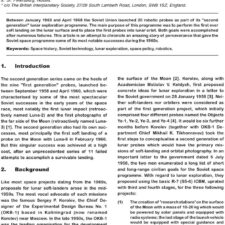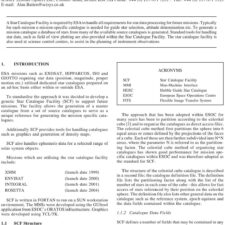Investigation of ESA’S RAM-EP Intake via Direct Simulation Monte Carlo
£5.00
Claudio Rapisarda (2022), JBIS, 75, pp.30-35
Refcode: 2022.75.030
DOI: n/a
Abstract:
Very-Low Earth Orbits (VLEOs) enable commercially viable and sustainable space applications by introducing several payload and platform benefits. Nevertheless, spacecraft operating in low orbits experience orbital decay due to the presence of significant aerodynamic forces. The Atmosphere-Breathing Electric Propulsion (ABEP) concept is based on the ingestion of rarefied atmospheric particles, through an intake, which are then employed by a thruster as propellant in order to compensate for drag. As the need for onboard propellant is removed, the orbital lifetime is extended. This paper aims to investigate the performance of the RAM-EP collector by Direct Simulation Monte Carlo (DSMC). This is achieved by modelling and simulating the intake collection efficiency and compression ratio in the dsmcFoam+ solver under varying conditions. Firstly, the GIT RIT10 thruster is reviewed to constrain the intake geometry. Then, the VLEO environment is modelled at average solar and geomagnetic conditions through the NRLMSISE-00 atmospheric model. The dsmcFoam+ methodology is therefore verified against the DSMC SMILE results retrieved from the literature. The performance of the intake is measured over a range of altitudes ranging between 180-250 km for which a maximum collection efficiency and compression ratio of 22.77% and 21.85 are respectively yielded. Hence, the drag force is evaluated in dsmcFoam+ and the thrust-to-drag ratio is obtained to prove that full drag compensation occurs at all altitudes considered. Finally, the flow incidence angle is varied up to 30°, for which a maximum percentage degradation of 15.71% and 7.80% is observed for the collection efficiency and compression ratio.
Keywords: Very Low Earth Orbits, Air-breathing Propulsion





